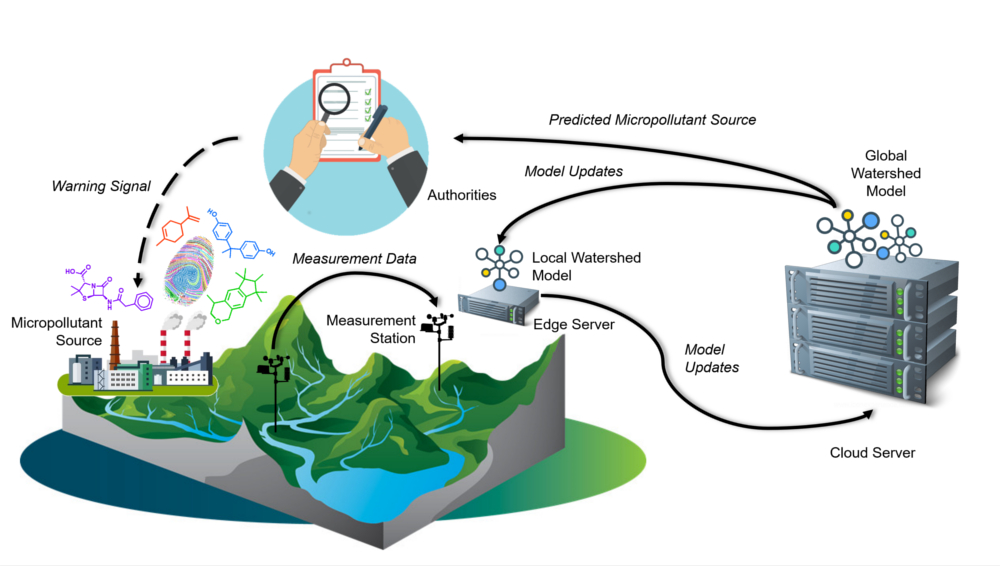Öğretim üyemiz Dr. Mehmet Tahir Sandıkkaya'nın Türkiye koordinatörü olarak Avusturya, İsviçre ve Finlandiya'da yer alan araştırma kurumlarının ortaklığıyla AB Horizon 2020 Future Emerging Technologies tarafından fonlanan, uzun vadeli bilişim projelerini ERA-NET kapsamında desteklemek amacıyla kurulan CHIST-ERA'ya sunulan "Sustainable Watershed Management Throught IoT-Driven Artificial Intelligence" başlıklı projesi desteklenmeye hak kazandı. Viyana Teknik Üniversitesi (TU Wien)'nde doktora sonrası araştırmacı olarak görev yapan mezun öğrencimiz Dr. Atakan Aral Avusturya koordinatörü olarak projede yer aldı.
Hocamız Dr. M. Tahir Sandıkkaya ve mezunumuz Dr. Atakan Aral'ı tebrik ediyor, projede başarılı olmalarını diliyoruz.

Proje Hakkında: (Kaynak)
Proje Sunumu
Proje Web Sayfası
Water resource contamination substantially threatens the environment. Rapid identification of chemicals and their emission sources in watersheds is crucial for sustainable water resources management. Despite studies on the measurement of micropollutants in the water resources around Europe, efficient utilization of the data in decision-making to protect water resources from detrimental chemical pollution is currently not available. Novel Internet of Things (IoT) technologies, coupled with advanced Artificial Intelligence (AI) strategies, may provide faster and more efficient responses to these challenges in real-time reactions as well as long-term planning.
The proposed solution aims at providing: better understanding and near real-time response to pollution incidents; better prediction of pollution spread and improved response for mitigation of effects in the long run; data-driven AI life-long learning and evolution of the algorithm. The primary outcome would be an integrated decision support system utilizing micropollutant measurements along with real-time collected hydrodynamic and meteorological data of a watershed for sustainable water quality management. Since micropollutants are related to emission sources and are resistant to degradation, they are good indicators of pollution and fingerprints of the pollution sources.
Our approach is based on introducing and combining novel technologies in improving water pollution management in several critical phases. First of all, we rely on an advanced, scalable IoT technology that adapts to the considered problem's specific needs through a novel mechanism called viscoelasticity. Therefore, we obtain desirable data from the locations and at the time that is optimized for further data analysis. Then, we introduce a novel methodology for creating a more accurate hybrid model integrating the expert-based physical environment model and data-driven, evidence-based techniques. To that end, we introduce a novel graph-based functional representation of data that captures affinities and dependencies among data streams more efficiently.